#shelly moldoff
Text
November brings us 60 years of the Queen Bee!


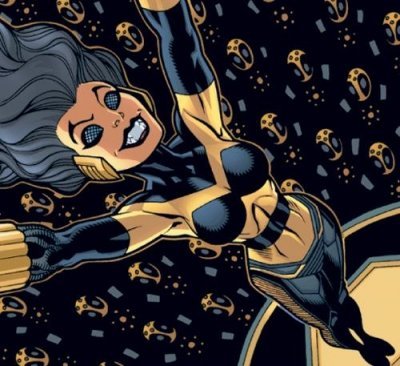

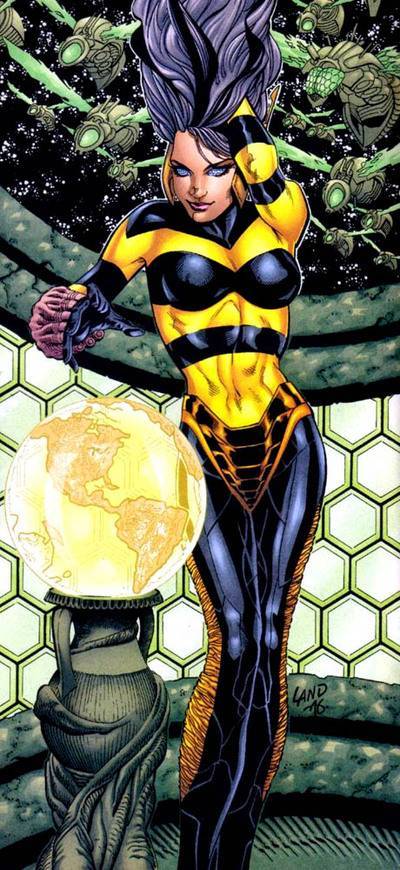


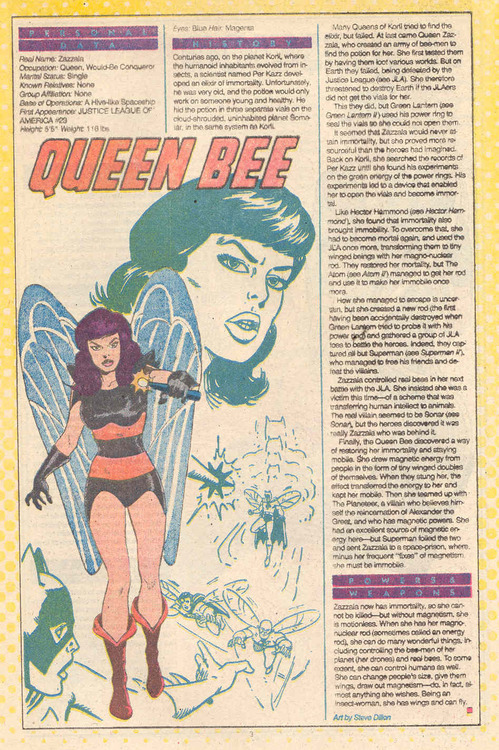
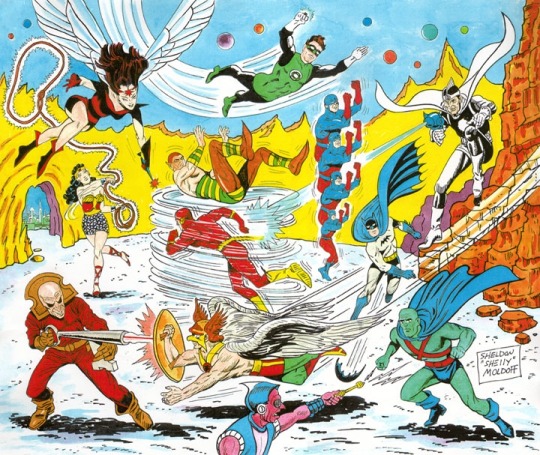

#dc comics#queen bee#dan mora#art adams#murphy anderson#howard porter#greg land#ed mcguiness#ed benes#steve dillon#shelly moldoff
24 notes
·
View notes
Text
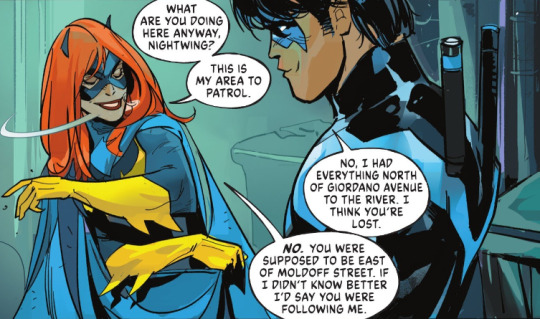
DC vs. Vampires #3
"You were supposed to be East of Moldoff Street."
I will always always always be a sucker for naming streets in Gotham City after past artists and writers. It's such a perfect way to memorialize these legendary creators who contributed so many iconic characters and stories that we all know and love.

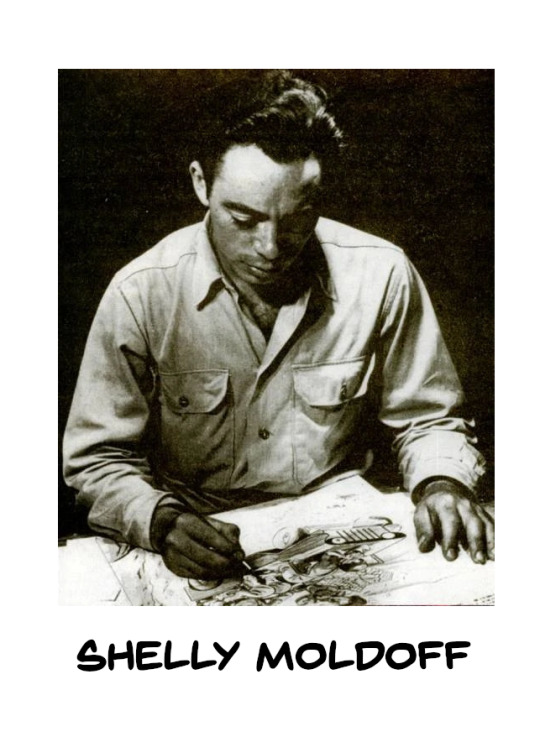
These are more than just easter eggs. Giordano Avenue and Moldoff Street are just little lines on a fictional map, but these eponymous streets quite literally make up the fabric of Gotham City. They are dedicated in honor, and in loving memory to all the comic book greats who have worked to bring this city to life.
Dick Giordano worked as an editor and inker for many years, eventually serving as the executive editor of DC comics for much of the 1980's. His name appeared on countless titles and his impact on the industry cannot be overstated. Everyone loves Dick Giordano.
A name you might be less familiar with is Sheldon "Shelly" Moldoff. During the Golden Age of comics Moldoff was a prolific cover artists for titles like All-American, Action, and All Star Comics. Beginning in 1940, he became the regular artist for Hawkman and designed the costume for Shiera Sanders aka Hawkgirl.

After being drafted into World War II, Moldoff became an early pioneer in horror comics, but it wasn't until 1953 that he began drawing for Batman and Detective Comics.
When Moldoff finally arrived in Gotham City, he was working as a ghost artist, drawing stories that would be credited to Bob Kane. At the time, DC employed plenty of these artists and it was a very common practice. The only difference with Shelly Moldoff was this: DC had no idea that he was working for them.
For nearly 15 years, Shelly Moldoff drew Batman on the down low, taking money under the table from Bob Kane. In a 1994 interview he had this to say of the experience:
"DC didn't know that I was involved; that was the handshake agreement I had with Bob: 'You do the work. You don't say anything.' No, he didn't pay great, but it was steady work, it was security... which is the compensation I got for being Bob's ghost– for keeping myself anonymous."
With little pay and zero recognition, you might expect an artist to put forth a subpar effort, or at least phone it in on occasion, but that's kind of the opposite of what happened. Shelly Moldoff and an anonymous army of other ghost artists churned out tons of new characters during this period that have stood the test of time: Calendar Man, Bat-Mite, Mr. Freeze, Ace the Bat-Hound!!!
Shelly Moldoff revived the Riddler. Shelly Moldoff gave us Poison Ivy!
During the Great DC Writers Purge of 1968, many veteran writers and artists lost their jobs after demanding fair pay, pensions, and health insurance. Shelly Moldoff was among them. His final ghost-drawn story was published in Batman #199, and it would be 30 years before he worked for DC again. Moldoff passed away in 2012. He was the last surviving contriubtor of Action Comics #1.
I don't even know how to end this. Before today I had never even heard of Sheldon Moldoff. After toiling in obscurity and keeping himself anonymous for so many years, I guess I'm just glad to know that Gotham City remembers him.
#This is entirely strung together from wikis and a Mike W. Barr article btw#thank you for coming on this journey with me#I hope you learned something new#Shelly Moldoff#Dick Giordano#DC comics#Dick Grayson#Barbara Godon#DC vs. Vampires#panel#Hawkgirl#shiera sanders#witty street name tag
88 notes
·
View notes
Text
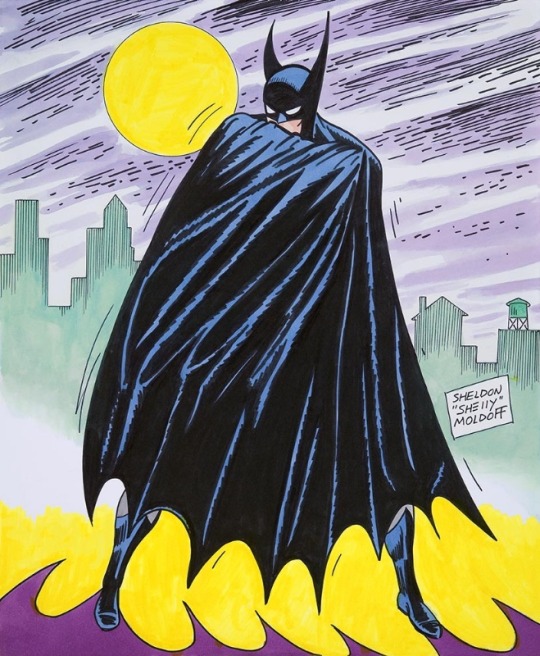
Batman by Sheldon Moldoff
#batman#sheldon moldoff#Shelly moldoff#Bruce Wayne#the dark knight#the caped crusader#art#dc comics#dcu#dc universe#dc superheroes#dc heroes#batman art
2 notes
·
View notes
Text

Moon Girl silverprint proof -art by Shelly Moldoff
4 notes
·
View notes
Text



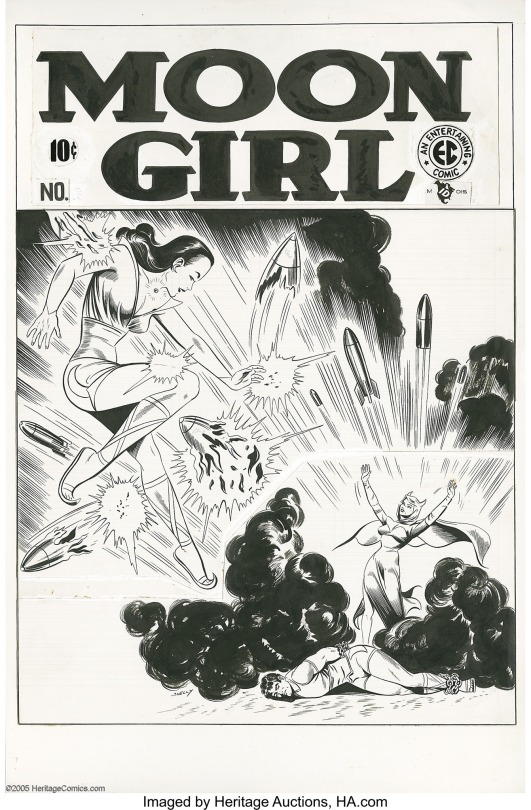



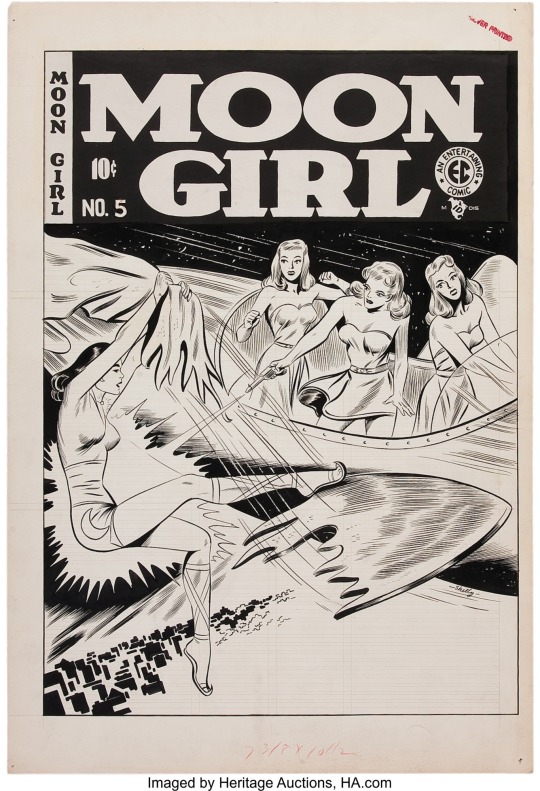
Johnny Craig (1&2) and Sheldon “Shelly” Moldoff (3-5) Moon Girl 1-5
4 notes
·
View notes
Photo

Also from the archive dig, 6-pg David Mazzucchelli comic done for Kodansha (iirc). Xeroxes, obviously, and only this glimpse because I don't want to be disrespectful to David for giving me these (the story has never been reprinted). As a fan, I'm always wishing he'd reprint this and other unavailable work (esp Rubber Blanket for new readers and those desperate to have the material), but I also appreciate the willingness to let things be and work and live on your own terms. Seeing just a tiny bit of the art reminds me of when David once showed me and @greedym a preview of Asterios Polyp at MOCCA. He had a full color galley, and he flipped all the pages past our staring eyes in a blur. It looked amazing even at a colorful blur. You could tell he wasn't being coy or pranking us, he wanted to share but didn't want to reveal anything before the book was published. It was a little like a magic trick, with a similar effect. I miss seeing David, it's been ages. People drift, we cling to memories while we float elsewhere. I'll always be grateful for @mcboingboing introducing me to David and Richmond back in the day - - to adopt my first cat, Mr. Jinx, from them, not even a comics-related thing (although it was at a convention, one of the 80s dead period Penta/Pennsylvania/Statler Hilton musty hotel things). Those were really nifty days. I'm grateful to still know and have contact with most of the people in the old NYC comics circle of friends, and my friends from the comic shop days and Satan Island. I got DMs raining down from one of my oldest friends as I type this tripe, hold on buddy, I gotta recharge the phone and get to work as soon as the Pirate gets off my dead foot). (P. S. The World's Funnest retrospect posts are back in swing on the Patreon (link in bio). Just posted script /Mike Allred inks for page 19, after Dave Gibbons and the Silver Age opener, also Brian Bolland's original cover colors, and the original project pitch. We'll get to David M's Fourth World section soon. Next up is the Shelly Moldoff Golden Age chapter, script, art, overlay lettering by Tom Orzechowski, bg on our original art pick for it, and meeting Moldoff. End of advertisement. ) https://www.instagram.com/p/CdWTRotvnNu/?igshid=NGJjMDIxMWI=
19 notes
·
View notes
Text

The GCD credits Kane for the art but this is too good for him.
The GCD (https://www.comics.org/issue/560/) also credits Shelly Moldoff -- a much better artist and future Kane ghost -- as background artist. But... I don't know. Maybe he helped more (😉) than credited?
Oops!
Instant update!
The GCD notes that the panel is a swiped from a much better artist. Mystery solved!
The layout is very similar to a panel by artist Creig Flessel from the Speed Saunders story published in Detective Comics (DC, 1937 series) #13 (March 1938): page 1, panel 2.
0 notes
Text
Sheldon Moldoff

When you think of uncredited Batman artist, one of the first would be Bill Finger. But many of the issues accredited, aka "bought from", to Bob Kane was revealed to actually have been done by artist and writer Sheldon Moldoff.
His early career was mostly drawing cover art for many of the most well-known hero's such as Green Lantern, Hawkman, and of course Batman---starting at #30. According to Mark Evanier, Moldoff even suggested to William Gaines the idea of a horror comic. Gaines later came out with the first horror comic Tales From the Crypt.
Sheldon Moldoff was a self-taught artist selling filler issues at 17 to DC editor Vincent Sullivan, the first possibly having been put in Action Comics #1, and hired right out of highschool to work as a ghost writer for Kane. He is now mostly known for his run on Batman 1953 to 1967, which had a prominent goofy tone to them. Within he would feature new characters such as Batwoman, Batgirl, Black Pirate, Ace the Bat-Hound, Poison Ivy, and Bat-Mite.
Other ghost artist of Kane included Jim Mooney, Dick Sprang, Winslow Mortimer, ect. This came from a deal Kane had with DC and according to Mr. Evanier "Kane could hire someone else to do the work, pay them low-end going rates for the industry, and live very well off what was left over." An artist named Lew Sayre Schwartz apparently did nearly all the work before Mr. Moldoff was brought in due to Mr. Schwartz moving on to other things.
Unfortunately when DC decided to rehaul the Batman titles to create them more realistically, Mr. Moldoff's style just wasn't cutting it and inkers Joe Giella and Sid Greene had to put in a lot of effort to make it work. This would push Sheldon Moldoff out of the job, doing a few things here and there, but his style was just deemed too "old-fashioned".
Fortunately it wouldn't be all sad as during the 80s as a cabbie and comic fan Dave Siegel arranged with Sheldon Moldoff to go to the Comic-Con International in San Diego. "Shelly was swamped with admirers who wanted to meet him. Many wanted to purchase re-creations he did of his classic covers. I asked him once which one was most requested and he thought for a moment then said, "Lately, anything with Bat-Mite on it." He designed that and many other well-known characters."
He would pass away in 2012 at age 91 due to kidney failure.
0 notes
Text
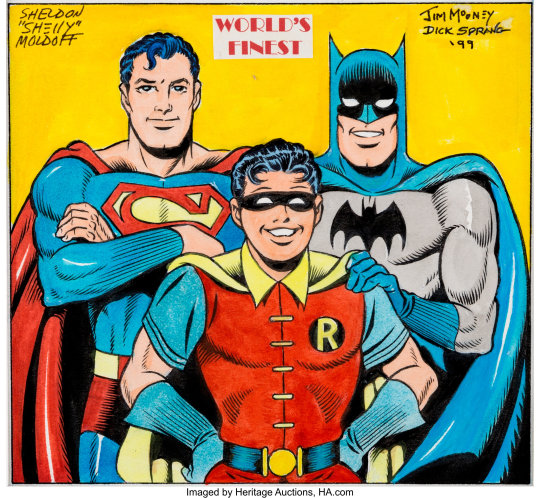
A really cool piece of original art, featuring the work of THREE Golden Age giants. Jim Mooney provided the pencils, with Dick Sprang on inks, and then Shelly Moldoff completing it with his colors.
99 notes
·
View notes
Photo



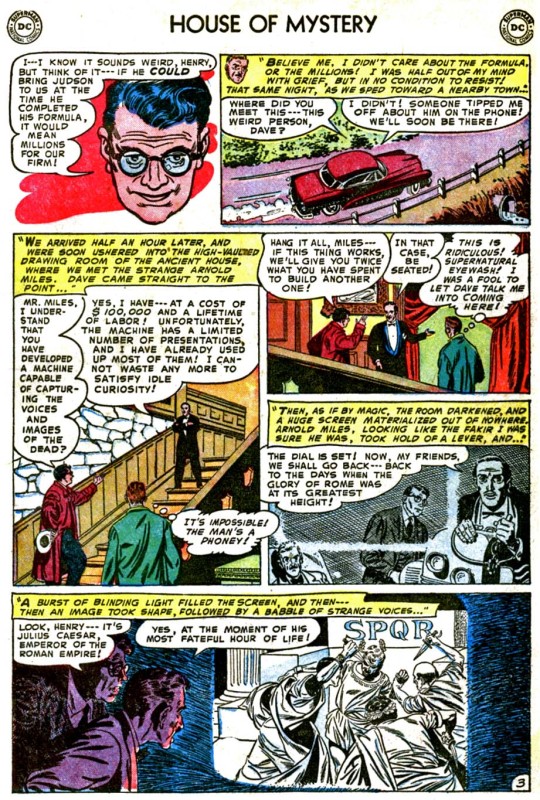



Dead Men Tell No Tales (HOUSE OF MYSTERY #16) Shelly Moldoff (7/53)
1 note
·
View note
Text
It's Gardner Fox's birthday, so I'm celebrating with my favorite of his co-creations, Hawkman!










#dc comics#hawkman#michael golden#alex ross#mike mignola#chris samnee#neal adams#rags morales#shelly moldoff#paul smith#steve lieber#bart sears#gardner fox
48 notes
·
View notes
Photo
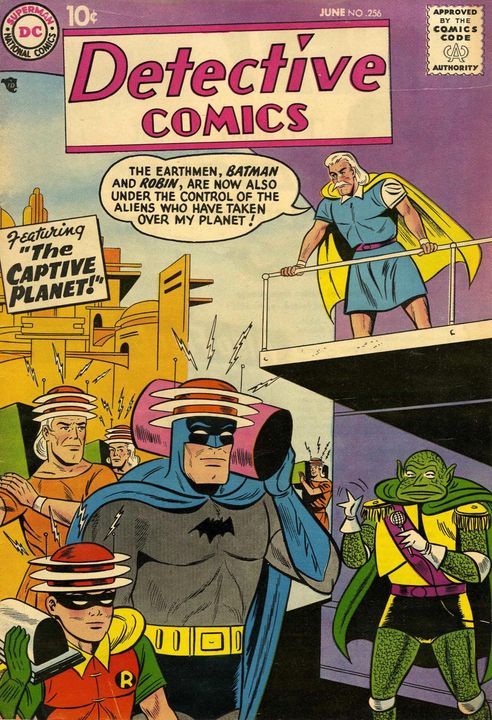
Sheldon “Shelly” Moldoff (1920 - 2012) https://ift.tt/35ia0hd September 08, 2020 at 02:32PM
+visit our fellow Goethepunk art page
20 notes
·
View notes
Photo







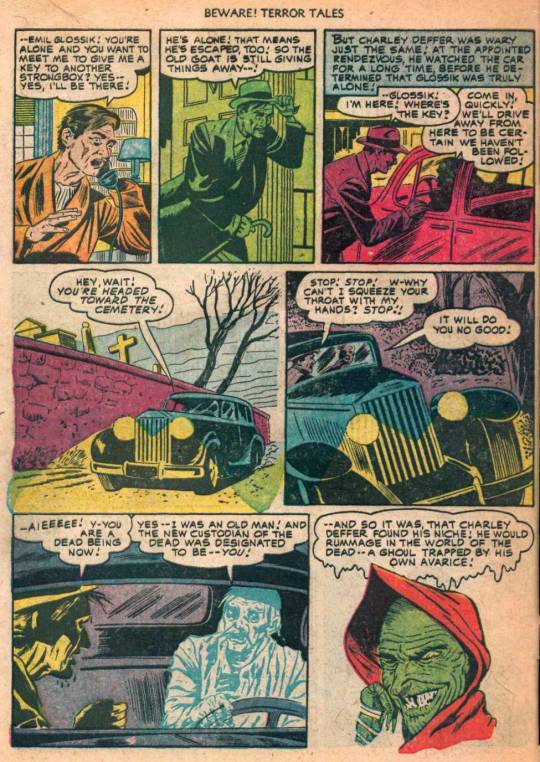
Custodian Of The Dead (BEWARE HORROR TALES #1) Shelly Moldoff EC ART SWIPE HAUNT OF FEAR #5 & VAULT OF HORROR #26)
1 note
·
View note
Text
Preview Batman: The Complete Silver Age Newspaper Comics Vol.1 From IDW
Preview Batman: The Complete Silver Age Newspaper Comics Vol.1 From IDW
This is a collection that no serious Batman collector could pass up. Never before collected, IDW are realising the first of three huge volumes of the Silver Age Batman newspaper strips that appeared in papers across America from 1966 – 1972, riding the popularity of the Adam West and Burt Ward fronted TV show of the era.
Batman: The Complete Silver Age Newspaper Comics Vol. 1can be bought on its…
View On WordPress
#Batman#batman and robin#Batman: The Complete Silver Age Newspaper Comics#Carmine Infantino#DC Comics#Joe Giella#newspapers#Shelly Moldoff#Silver Age#Whitney Ellsworth
0 notes
Photo

Gathering materials for the next World's Funnest retrospective post for the Patreon. Will include the Golden Age section script, Shelly Moldoff's inked pages, who the original artist on the segment was that Moldoff replaced, the World's Finest issue that inspired the project, Tom Orzechowski's letterin and meeting Shelley Moldoff at the Pittsburgh Comic Con. #comics #patreon #worldsfunnest #dccomics #comingsoon #sheldonmoldoff #batmite #mrmxyzptlk #lastimpstanding #goldenage https://www.instagram.com/p/Cdhcl65s5K6/?igshid=NGJjMDIxMWI=
#comics#patreon#worldsfunnest#dccomics#comingsoon#sheldonmoldoff#batmite#mrmxyzptlk#lastimpstanding#goldenage
10 notes
·
View notes
Photo
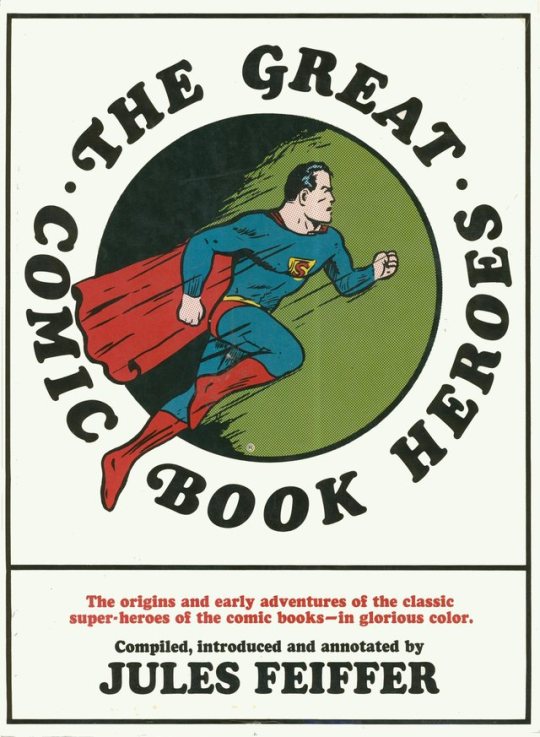
In January of 1977, I turned ten-years-old. And around that time, I would up getting my second book collection of vintage comic book stories--a book that, up until that point I didn’t even know existed. We found it in the remaindered section at Two Guys, a regional low-rent department store chain, kind of like the K-Mart of its day. And because I had money that had been given to me for my birthday, I was able to buy it. By that point, it was twelve years old and had gone through several printings--it was, in fact, the very first collection of vintage comic book stories ever published, coming out in 1965 just ahead of the Batman TV show craze.
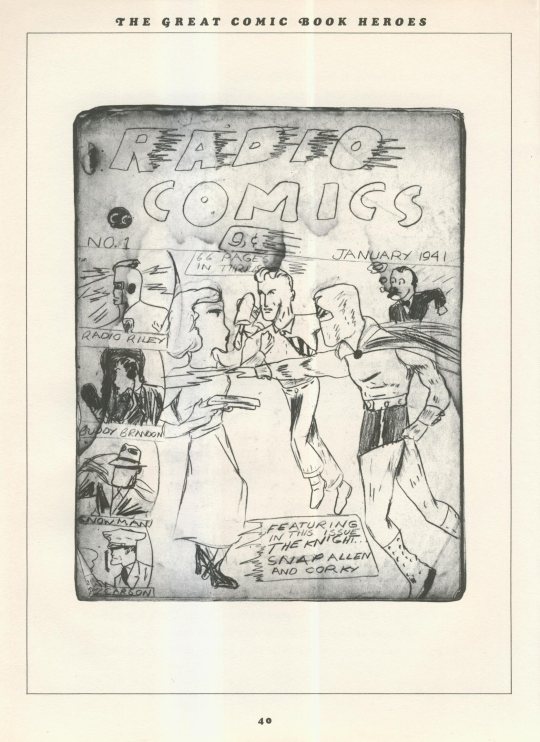
THE GREAT COMIC BOOK HEROES began life as an article that Jules Feiffer had written for Playboy magazine, of all places. It was a nostalgic look back, warts and all, at the comic books that were a part of his youth and the state of the industry a few years later when he was able to get into the business working for Will Eisner. From there, Feiffer went on to be a successful syndicated cartoonist, his strip primarily appearing in the Village Voice, as well as an accomplished playwright. He was so well-regarded, in fact, that he was able to convince a number of publishers to reprint stories from their back catalog in this hardcover collection--publishers who, up to this point, has never really worked in concert before.
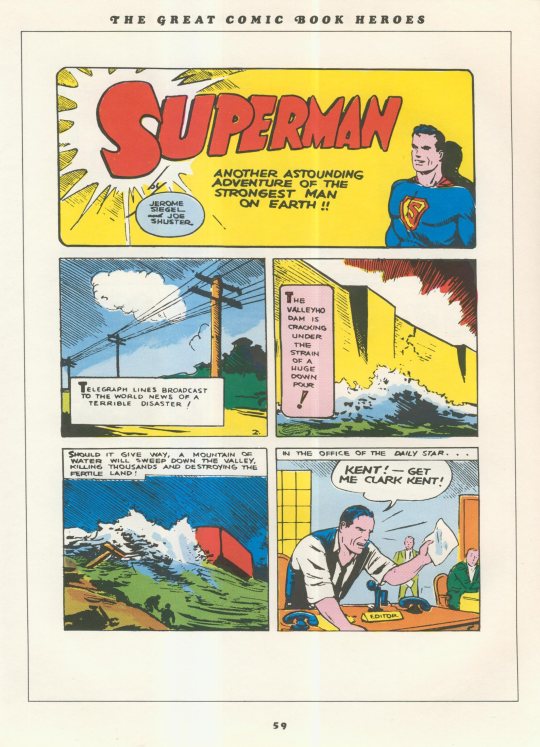
As no good reproduction materials existed, Feiffer worked in concert with DC’s Jack Adler to pioneered a process by which old comic books could be photographed under certain conditions to create a usable black line image, and then recolored. This same process was later used on many of DC’s reprints, in particular the FAMOUS 1st EDITION treasuries--I gather that the reason its use wasn’t more widespread is that it was more costly and time-consuming than was considered worthwhile for a regular comic book release.

Feiffer was also enough of a bigwig in 1965 that he was able to negotiate a minor detente in the legal agreement between DC/national Periodicals and Fawcett Publications, enough to allow him to reprint a single page’s worth of Captain Marvel. In 1977 when I read this book, I didn’t understand why this was a big deal (and in fact I had read this same story twice before already.) I believe it was the one and only exception ever granted, at least up until the point where DC began licensing the rights to Captain Marvel from Fawcett in 1973.
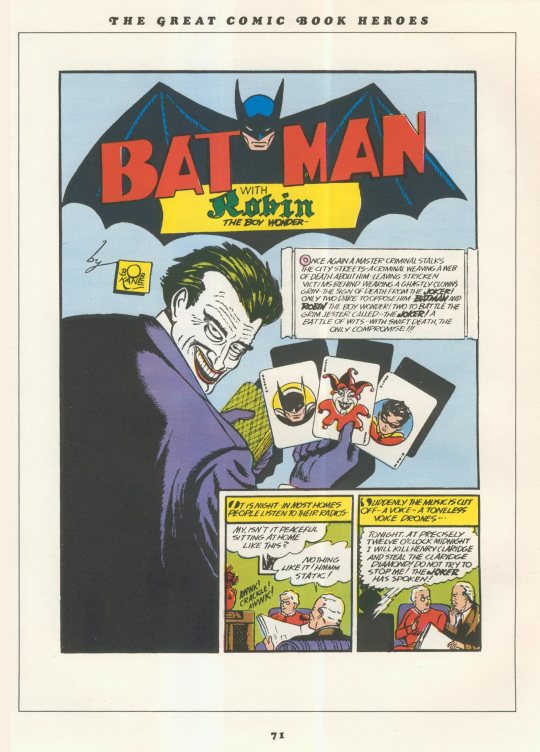
I will confess that, when I first bought this volume, I didn’t read any of Feiffer’s text. That seemed like work to me, who needed it? It was the stories that I was here for! I was hypnotized by the reproduction of one of the comic books that Feiffer had made and sold on the neighborhood street when he was a kid. I had begun to make my own comic books before this, and so this was a very primal point of connection for me--I think I may have read the text of just that one “chapter” (they were all short enough that they were only three or four pages long.)
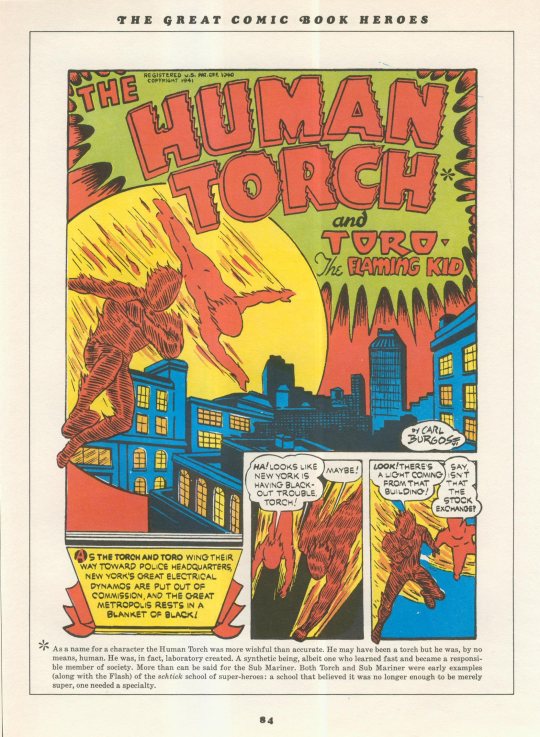
I also didn’t read the stories featuring the Human Torch, the Sub-Mariner and Captain America that were included in the volume. Why would I? I had learned from past experience that I adamantly disliked Marvel comics, decried them whenever I was asked about them, so there was no need to investigate these stories. It would literally be months, not until the summer of 1977, when, on one dull day with nothing better to do, I finally cracked and read through both Feiffer’s full text and the three Marvel stories. And they (along with the write-ups on Timely in the Steranko History of Comics, coming soon) were enough to compel me to give Marvel another chance. But we’ll get to that in due time.
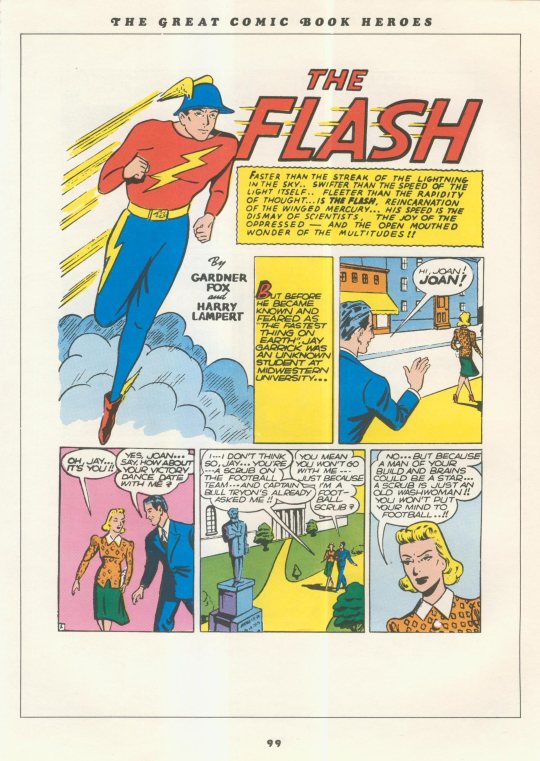
The one disappointing aspect of Feiffer’s book to me, coming to it twelve years later, is that there were already a number of stories in it that I’d read already. Because Feiffer tried to hit all of the mainstays of the big comic book houses in his reprints, and as often as possible, the opening or origin installments. The only times he varied from this approach was when there was some other aspect of the character or the strip that he was trying to highlight--a number of these series took a little while to completely crystallize in their final forms, and Feiffer took that into account when choosing his stories.
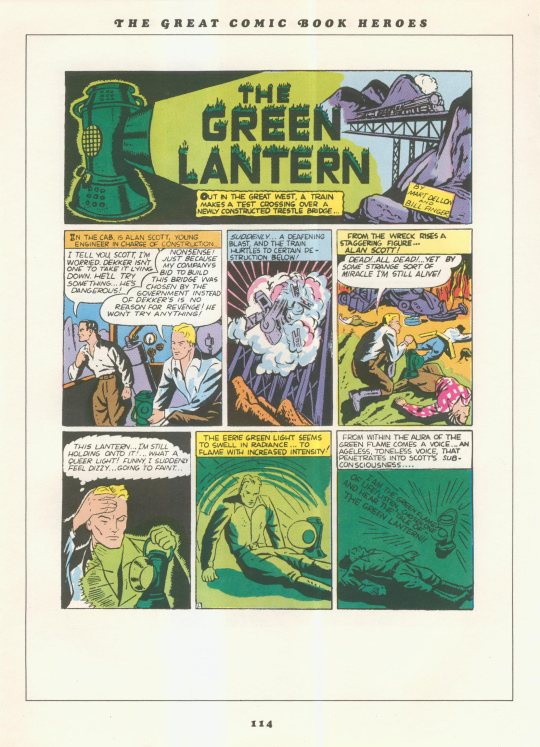
So what was reprinted in this volume? It opened with a two-page origin of Superman, taken not from ACTION COMICS #1 but rather from the more expanded version first shown in SUPERMAN #1. Thereafter, he ran a story that he sourced from SUPERMAN #3 but which was first published in ACTION COMICS #5. It’s really the first full story in which all of the quintessential elements of the Superman series coalesce: the Lois-Clark-Superman relationship in particular. There are several pages in the middle of it that were clearly reworked from newspaper strip samples, panels extended and reformatted into comic book pages haphazardly.

Following the single page of Captain Marvel he could show, Feiffer then reprints the origin of Batman, from BATMAN #1 (which I’d read), as well as the first story featuring the Joker (likewise). This was about a year in, by which point Robin had been introduced, and wit the debut of the Joker all of the elements were in place. But not new to me. Next was a relatively late Human Torch story from MARVEL MYSTERY COMICS #20--like Batman, by this point the Torch’s young partner Toro had come into the series, and it had settled down into typical super-heroics. But I didn’t read it, not yet.

A pair of stories that I’d already experienced came next: the first adventure of the Flash (my third copy of it!) from FLASH COMICS #1 and the first installment of Green lantern from ALL-AMERICAN COMICS #16. Next came a solo Spectre story from ALL-STAR COMICS #1. I was familiar with this early version of the Spectre from the FAMOUS 1st EDITION reprint of ALL-STAR #3, but he wasn’t especially interesting to me. Because he was already dead and could do literally anything, there wasn’t a lot of drama to be found in his stories. Even as a kid, this deficit was apparent to me. Superman, at least, had to struggle to accomplish whatever his goal was.
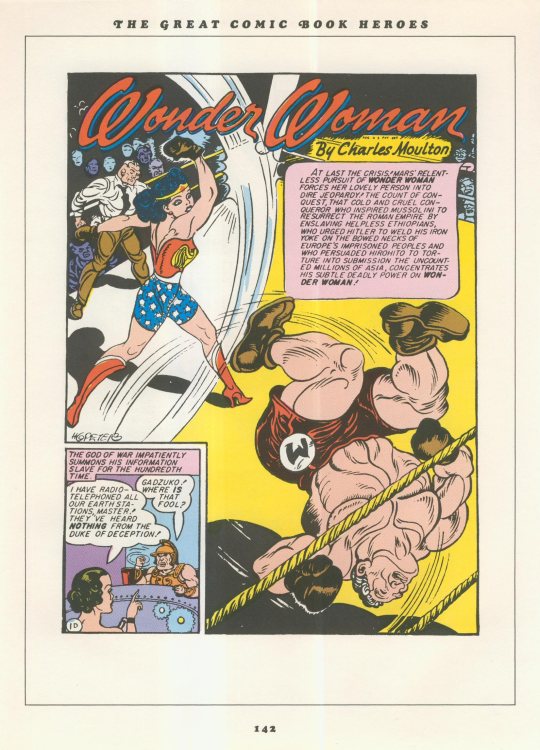
Next came an adventure of Hawkman, sourced from FLASH COMICS #5. Here, Feiffer skipped the earliest adventures of the winged wonder so as to showcase the work of Shelly Moldoff on the strip (and in particular how often he was swiping Flash Gordon panels by Alex Raymond, which happened everywhere.) This was followed by a Wonder Woman story from WONDER WOMAN #2--actually, it was a single chapter of a four-chapter larger story, but I wouldn’t discover this for decades. Feiffer chose it as a good example of some of the strange sexuality that was operating under the hood of what at first glance appeared to be a patriotic heroine series. This was the stuff that really made Wonder Woman sizzle, and the lack of which one of the reasons why her series had such a lack of pop in the 60s and 70s.

Then came a Sub-Mariner adventure from MARVEL MYSTERY COMICS #7, by which point creator Bill Everett had worked out the bugs. I didn’t read it for several months, but essentially it’s an orgy of destruction, as Namor returns to Manhattan to carve out vengeance for his undersea race by wrecking and destroying his way across the city--he even at one point accosts Mayor Fiorello LaGuardia. There isn’t much plot, only carnage--and it ends with Namor’s friend Berry Dean warning him that the Human Torch would be on his trail. But that historic meeting wasn’t included.
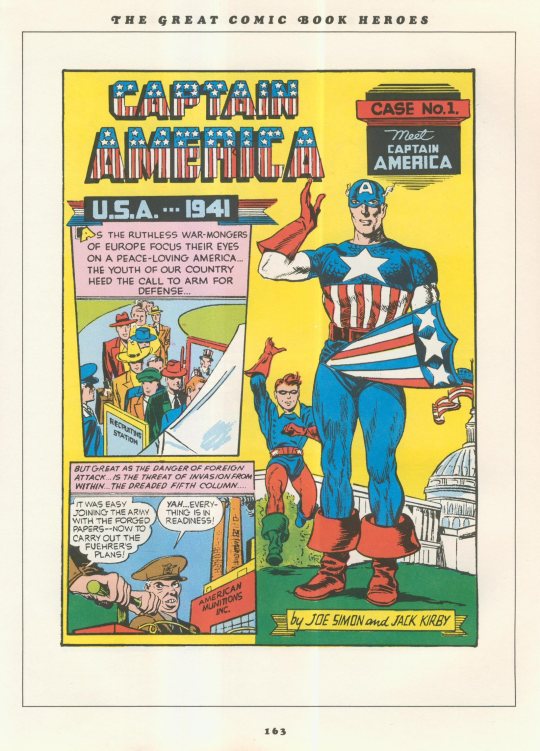
I also skipped the origin of Captain America, from CAPTAIN AMERICA COMICS #1. It’s a pretty crude piece of work, like most of what was reprinted in this volume. There are only hints of the explosiveness that Jack Kirby would bring to the comic book page in the next few issues, to say nothing of the next few decades. The pages were a little bit more jigsaw puzzle-y, but only a little bit. That would change as Kirby got going on Cap.

Next came the first Plastic Man adventure, from POLICE COMICS #1, and which I’d read a few weeks earlier in SECRET ORIGINS OF THE SUPER DC HEROES. It was still a fun tale, but one that only hinted at the inventiveness that Jack Cole would bring to the character and to the page. I felt the same way about the Spirit based on the story that Feiffer reprinted here. He spent a lot of time talking up how innovative and impressive a series it was, but from this sampling, I just couldn’t see it. Part of that, no doubt, is that most scholars consider the best period of Eisner’s Spirit to run from around 1946-1950 or so. But Feiffer was working for Eisner for most of that period--he wrote several of the most memorable tales--and so his interest was in the earliest Spirit adventures, the ones he read as a kid.
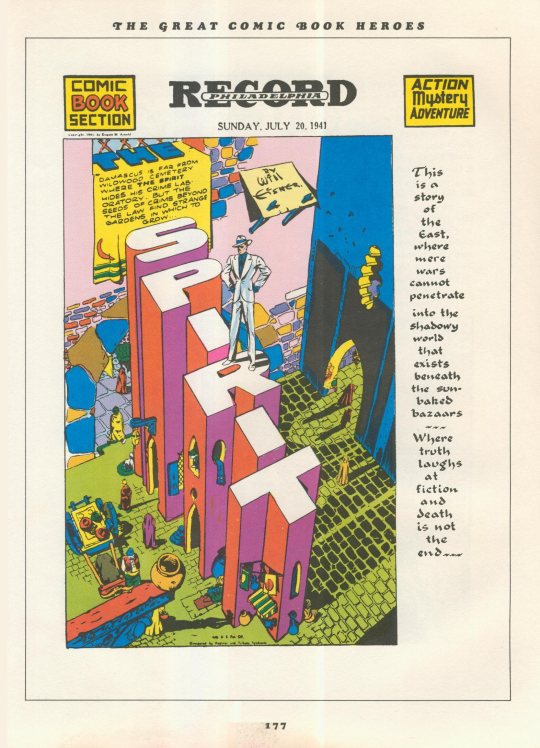
So it was a highly-enjoyable volume, and one that would have a greater impact on me over the course of time, but also slightly disappointing. But I was glad to have it, in particular because its existence came as a total surprise to me. At this point in time, there were precious few compilations of old comic book stories, so each one was like a treasured gem.
#The Great Comic Book Heroes#Jules Feiffer#Superman#Captain Marvel#Jack Adler#Batman#Flash#Green Lantern#Human Torch#Hawkman#Spectre#Wonder Woman#Sub-Mariner#Bill Everett#Captain America#Jack Kirby#Plastic Man#The Spirit#Will Eisner#DC#Marvel
287 notes
·
View notes